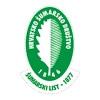
DIGITALNA ARHIVA ŠUMARSKOG LISTA
prilagođeno pretraživanje po punom tekstu
| ŠUMARSKI LIST 1-2/1966 str. 9 <-- 9 --> PDF |
SELECTION OF PLUS TREES* (Introductory paper) by MIRKO VIDAKOVIĆ Forestry Faculty, Zagreb and Institute for Conifers, Jastrebarsko, Yugoslavia. INTRODUCTION Plus trees are used as stated by Schreine r (36) for: (1) the establishment of seed orchards, (2) direct silvicultural purposes, if a clonal propagation by means of cuttings is possible, and (3) use in hybridization, i.e. in tree breeding work. In consequence it is understandable that great attention is paid to the selection of plus trees. Both the success of further work in tree improvement and the final result depend in many ways on the choice of the initial material. With the development of forest genetics, methods of plus tree selection have also been developed. In the initial stages of forest genetics, when work was done with great enthusiasm but perhaps less knowledge about the heritability of characters in forest trees, the choice of plus trees was performed mainly by means of visual estimate. It was believed that such a selection is completely sastisfactory, and that further use of the material selected in this manner will yield desirable results. With an ever intensified development of forest genetics new conceptions were formed. As theortical knowledge and experience with forest tress, increased it was realized that a good phenotype need not always be a good genotype. It was established the majority of commercially important properties is of a quantitative character. It was likewise found that the habit of a tree is influenced by the site, the silvicultural system, and the environment under which a tree grows. All this contributed to a more serious approach to the problem of plus tree selection. If we take into consideration the object of tree improvement as well as the search for the safest possible criteria for the selection of trees, we notice all the difficulties with which investigators are confronted in the solution of these problems. It should be stressed that in this direction much has already been done. In this report we are going to treat a number of problems and individual views about plus tree selection in order to provide a basis for discussion and explanation of the individual view points. We consider that the following questions are important: 1. Intensity (criterion) of selection. 2. Development and use of mathematical indices in the selection of plus trees. 3. Selection for one, two or more characters. * The author wishes to express his thanks to Professor Howard B. Kriebel who has read and corrected the manuscript. |